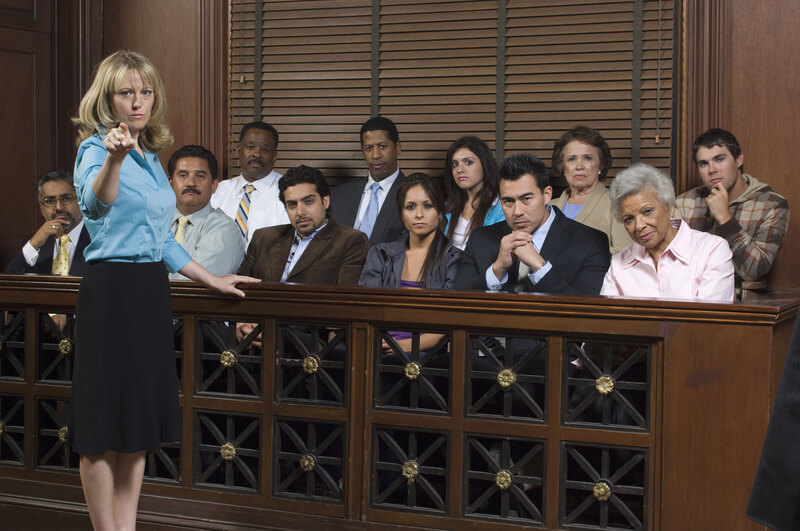Have you ever found yourself hooked on the courtroom drama of Judge Judy? Are you captivated by the heated arguments, the swift justice, and the stern, unwavering verdicts?
If you are a fan of courtroom dramas, you do not want to miss this article. We will delve into the riveting world of TV court shows and reveal how much they contrast with real-life proceedings.
We will dissect everything, from the setting to the process, rules, verdicts, and even the impact these shows have. Prepare to be intrigued, enlightened, and maybe even surprised as we pull back the curtain.
The Appeal of “Reality” Courtroom Shows
Television shows like Judge Judy have captivated audiences for decades. These shows typically feature real-life small claims cases that deal with personal disputes on a set that looks like a courtroom.
Interestingly, these shows differ from traditional courtroom procedures. The rulings are binding arbitration rather than actual judicial decisions. This arrangement means that the decision made by a TV judges is final. The parties involved have no option to appeal.
These courtroom drama shows offer viewers a unique window into the justice system, albeit a skewed one. This voyeuristic peek into personal disputes and legal wrangling is inherently fascinating to many people. Also, these programs feature compelling characters in the form of judges, litigants, and sometimes the audience.
Finally, the fast-paced nature of these shows offers a sense of instant gratification. While real-life legal proceedings can take months or even years, these cases get resolved in 30 minutes to an hour.
Real Court vs. TV Courtrooms
The setting in a real-life courtroom is often solemn and formal to reflect the seriousness of the judicial process. These courts include a judge’s bench, witness stand, jury box, and separate tables for the prosecution and defense. Moreover, real courtrooms must accommodate a court reporter, a bailiff, and public seating. Everything about the environment demands respect and attention. Wether it’s a criminal case or a civil case. Accordingly, even minor infractions like a ringing cell phone can warrant sanctions from the judge.
On the other hand, television presents a more visually appealing version of courtroom drama. The sets may resemble the real-world environment in a basic layout, but they exist to maximize camera visibility. Also, the areas where the most dramatic action happens get more attention. The judge’s bench, litigant’s podium, and audience areas take priority. In most cases, they also exclude a jury box since they do not need them. These differences create a more intimate environment to encourage a dramatic atmosphere.
The Process: Legal Procedures and Dramatic License
In real-life, the legal process divides into three main stages: pretrial, trial, and post-trial.
The pretrial phase often involves the most extensive work. It includes filing complaints, gathering evidence, interviewing witnesses, and settlement negotiations.
The case proceeds to the trial stage if there is no agreement between the parties. Then a trial ends with a verdict that determines the outcome of the case.
Post-trial involves the execution of the judgment. This phase could include sentencing, awarding of damages, or the implementation of court orders. Furthermore, it offers opportunities for appeal if a party is dissatisfied with the outcome.
Television courtroom dramas simplify these processes for the sake of entertainment and time constraints. For example, the show usually skips the pretrial phase entirely. The viewer gets dropped into the action at the trial stage, with the parties presenting their cases. This decision heightens the drama and tension for the audience. The resolution also arrives quickly, often within a single episode. The result can leave viewers with the impression that everything has settled.
This significant abbreviation can create a distorted view of the justice system. Legal procedures are far more complex, nuanced, and time-consuming than their television counterparts suggest.
The Rules: Order in the Court
Courtrooms depend on rules to maintain order and ensure a fair trial. These regulations dictate the respectful conduct expected from all parties involved. For instance, outbursts can result in removal and even contempt charges. Similarly, the dress code requires formal attire as a mark of respect for the court’s authority.
However, TV shows can bend, flex, or break these rules for dramatic effect. Litigants may argue with each other, interrupt proceedings, or have emotional outbursts. The judge may dress formally, but litigants may appear in casual attire. As a result, the audience may not fully grasp the complexities and importance of the rules.
This bending of rules on these programs contributes to the theatrical nature of the shows. Nonetheless, viewers should understand that these portrayals are not accurate.
Consult a Local Attorney
Courtroom dramas and reality shows captivate us with their theatrics and swift dispute resolution. But they are not an accurate representation of real-life court proceedings. The legal system is a complex and nuanced entity. It has roots in centuries of jurisprudence, and the path to justice can often be more intricate and time-consuming than depicted on TV.
Do you have a real-life legal drama that demands attention? Then speak to a qualified local lawyer. Our representatives are available 24/7 at (866) 345-6784 or by completing our brief form.

